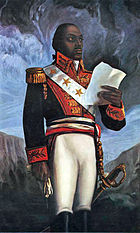United States v. The Amistad
From Wikipedia, the free encyclopedia
For other uses, see Amistad (disambiguation).
| The Amistad | |||||||
|---|---|---|---|---|---|---|---|

| |||||||
| Argued February 22 – March 2, 1841 Decided March 9, 1841 | |||||||
| Full case name | United States v. The Amistad | ||||||
| Citations | 40 U.S. 518 (more)
15 Pet. 518; 10 L. Ed. 826; 1841 U.S. LEXIS 279
| ||||||
| Prior history | United States District Court for the District of Connecticut rules for the Africans; United States appeals to the United States Circuit Court for the District of Connecticut, lower court affirmed; United States appeals to the U.S. Supreme Court | ||||||
| Subsequent history | Africans returned to Africa not by way of the President, but by way of abolitionists; United States Circuit Court for the District of Connecticut dispenses monetary awards mandated by theSupreme Court; United States Circuit Court for the District of Connecticut hears a petition by Ramon Bermejo, in 1845, for the unclaimed monetary sum retained by the court in 1841; petition granted in the amount of $631 | ||||||
| Holding | |||||||
| The Africans are free, and are remanded to be released; Lt. Gedney's claims of salvage are granted, remanded to the United States Circuit Court for the District of Connecticut for further proceedings in monetary manners. | |||||||
| Court membership | |||||||
| |||||||
| Case opinions | |||||||
| Majority | Story, joined by Taney, Thompson, McLean, Wayne, Catron, McKinley | ||||||
| Dissent | Baldwin | ||||||
| Barbour took no part in the consideration or decision of the case. | |||||||
| Laws applied | |||||||
| Pinckney's Treaty, art. IX; Adams-Onís Treaty | |||||||
| North American slave revolts |
|---|
 |
|
The Amistad, also known as United States v. Libellants and Claimants of the Schooner Amistad, 40 U.S. 518 (1841), was aUnited States Supreme Court case resulting from the rebellion of Africans on board the Spanish schooner La Amistad in 1839.[1] It was an unusual freedom suit that involved international issues and parties, as well as United States law. The historian Samuel Eliot Morison in 1965 described it as the most important court case involving slavery before being eclipsed by that of Dred Scott.[2]
The schooner was traveling along the coast of Cuba on its way to a port for re-sale of the slaves. The African captives, who had been kidnapped in Sierra Leone and illegally sold into slavery and shipped to Cuba, escaped their shackles and took over the ship. They killed the captain and the cook; two other crew members escaped in a lifeboat. The Africans directed the survivors to return them to Africa. The crew tricked them, sailing north at night. The Amistad was later apprehended near Long Island, New York, by theUnited States Revenue Cutter Service and taken into custody. The widely publicized court cases in the United States federal district and Supreme Court, which addressed international issues, helped the abolitionist movement.
In 1840, a federal district court found that the transport of the kidnapped Africans across the Atlantic on the slave ship Tecora was in violation of laws and treaties against the international slave trade by Great Britain, Spain and the United States. The captives were ruled to have acted as free men when they fought to escape their illegal confinement. The Court ruled the Africans were entitled to take whatever legal measures necessary to secure their freedom, including the use of force. Under international and sectional pressure, U.S. President Martin Van Buren ordered the case appealed to the Supreme Court. It affirmed the lower court ruling on March 9, 1841, and authorized the release of the Africans, but overturned the order of the lower court that they be returned to Africa at government expense.
Supporters arranged for temporary housing of the Africans in Farmington, Connecticut as well as funds for travel. In 1842 they transported by ship those who wanted to return to Africa, together with American missionaries.
Contents
[hide]- 1Rebellion at sea and capture
- 2Parties
- 3British pressure
- 4Spanish argument
- 5Lower court proceedings
- 6Arguments before the Supreme Court
- 7Decision of the Supreme Court
- 8After the decision
- 9Related laws
- 10Commemoration and legacy
- 11See also
- 12References
- 13Further reading
- 14External links
Note from Linda Hudson
This case in the Supreme Justice System was amazing for the slaves that was being shipped and purchase in the United States. We have come so far from this time and accomplish a great deal of goals as black African American.





No comments:
Post a Comment